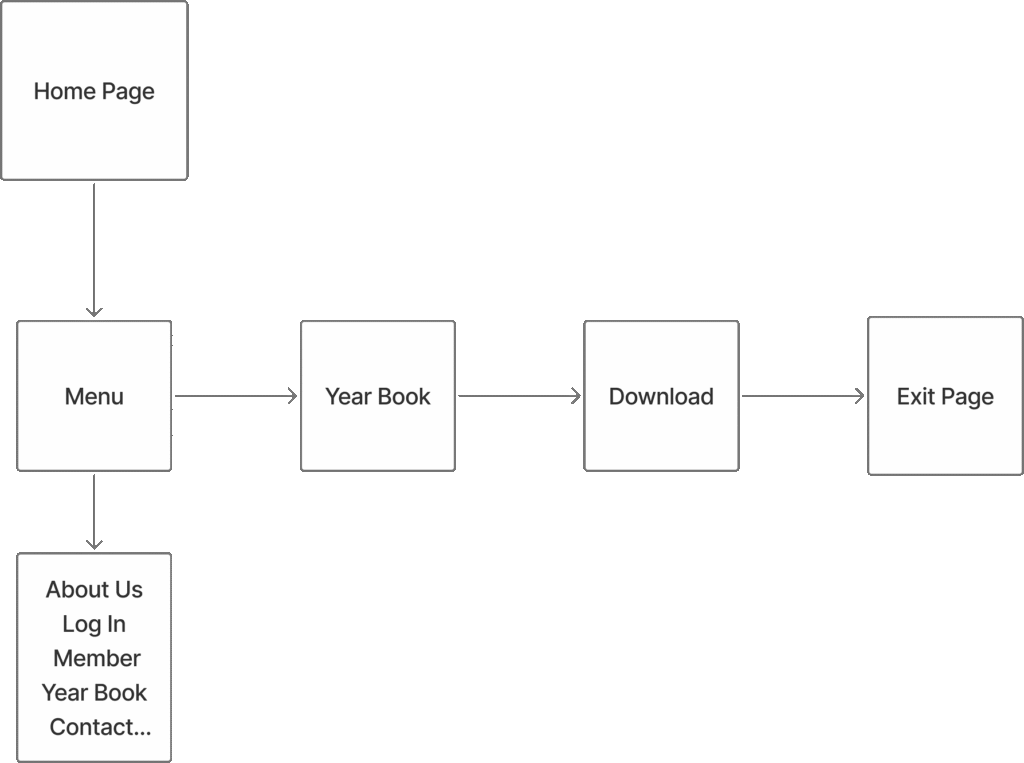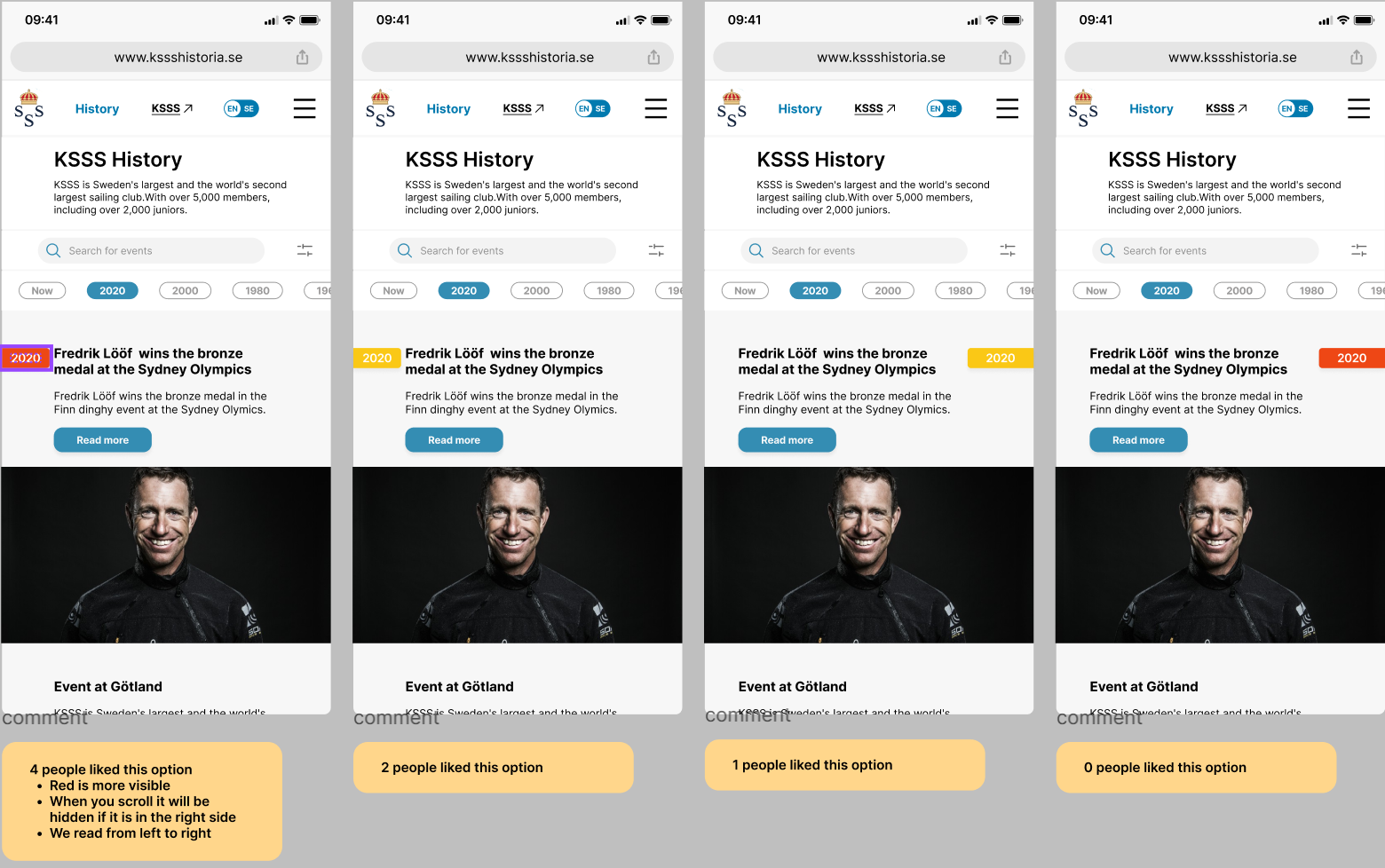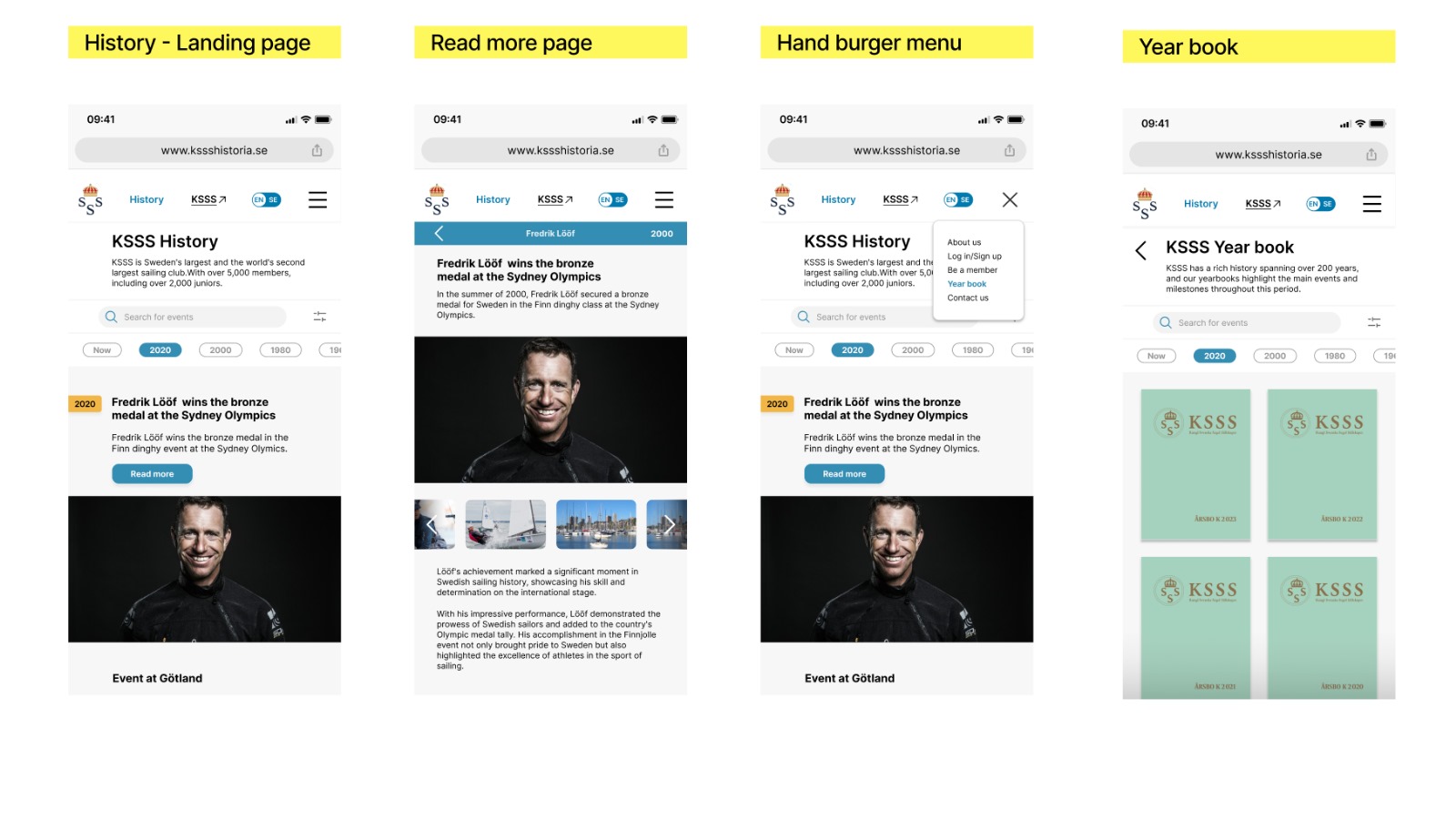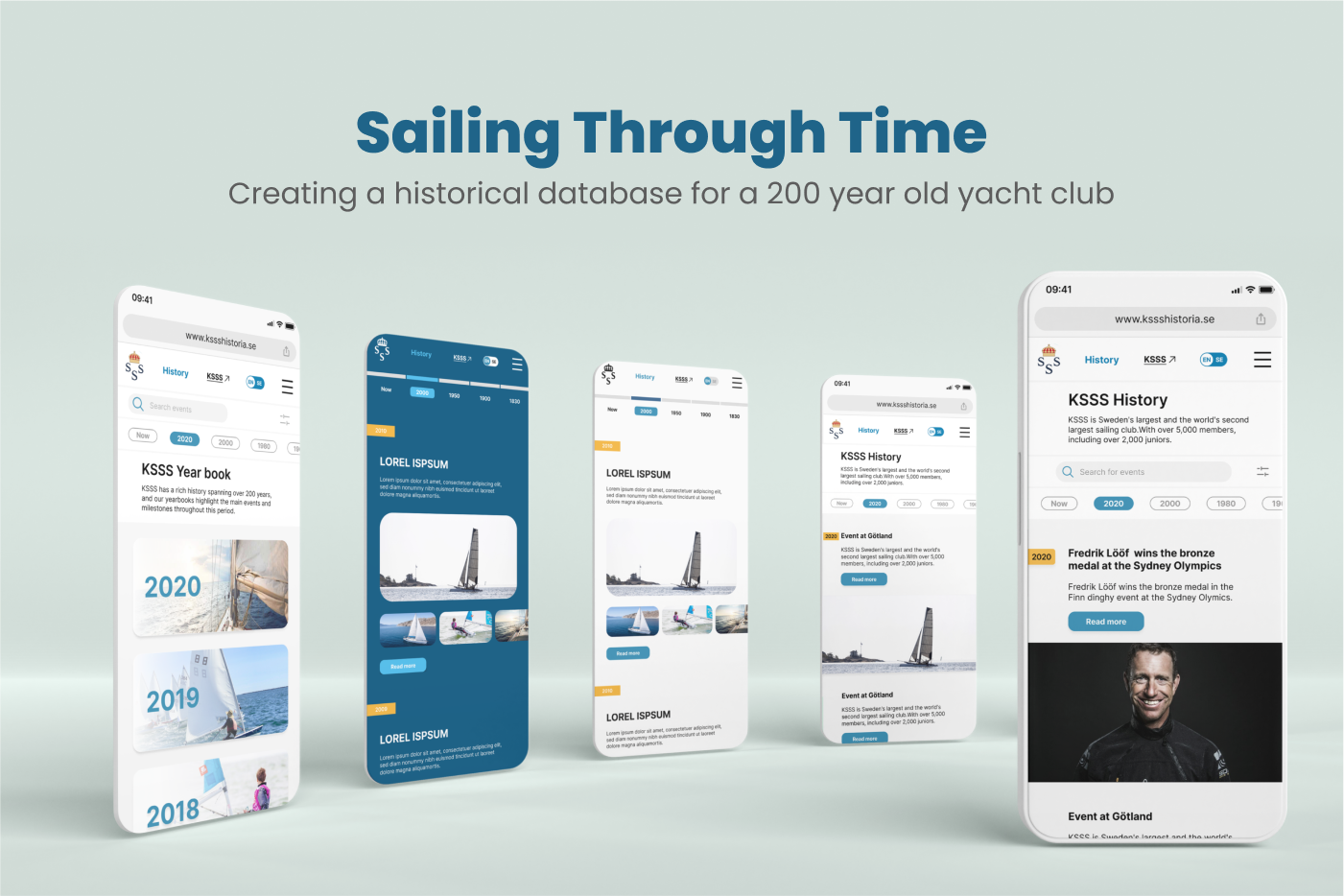Royal Swedish Yacht Club (KSSS)
Client: Royal Swedish Yacht Club (KSSS)
Timeline: March–May
Role: UX Researcher & UI Designer
Team: 4 UX Designers
The Royal Swedish Yacht Club (KSSS), founded in 1830, is one of the world’s oldest and largest sailing clubs. They wanted a website to share their rich history with members in a fun and easy way. Our job was to create a simple, engaging digital archive.
Problem
KSSS had lots of historical documents, but no easy way to share them online. They needed a website that was user-friendly for members and simple for staff to update.
Solution
We built a website that’s fun to use and easy to manage. It features an interactive timeline where members can scroll through key events in the club’s history. We also added a simple tagging system so staff can organize content without hassle.
Project Timeline

Research
I started by looking at historical timelines to understand how they work and what they usually look like. The client didn’t know much about their users or how interested they were in the organization’s history. To address this, I ran a survey on 109 KSSS members that gave us useful information. It helped both us and the organization understand who the users are, how interested they are in the history, and what they want from the archive.



Concept
Based on the research, I collaborated with the team to develop initial ideas. We concentrated on creating a platform that features an interactive timeline and easy access to digital yearbooks. I also designed a flexible tagging system to help staff organize events into different timelines, making updates quick and simple.
User flow
I mapped out how users would navigate the website to ensure it was intuitive and straightforward.


User testing
I ran A/B tests with five participants to test different button designs (placement and color) for the year tags. Their feedback helped us make the final design clear, engaging, and easy to use.

Final Design

Finished Design
Result
KSSS expressed satisfaction with the research and features we delivered and then took the next step by implementing them into the website.
Personal learning
This was our first time working with a front-end development team and my first experience with the agile methodology. Initially, my team felt overwhelmed by the number of weekly meetings and struggled to keep up with the fast pace. They preferred shorter daily check-ins instead. To improve our workflow, we adjusted the agile process to meet our needs. We introduced key roles such as project owner and scrum master to enhance communication. These changes simplified our collaboration and helped us work together more smoothly and effectively.


